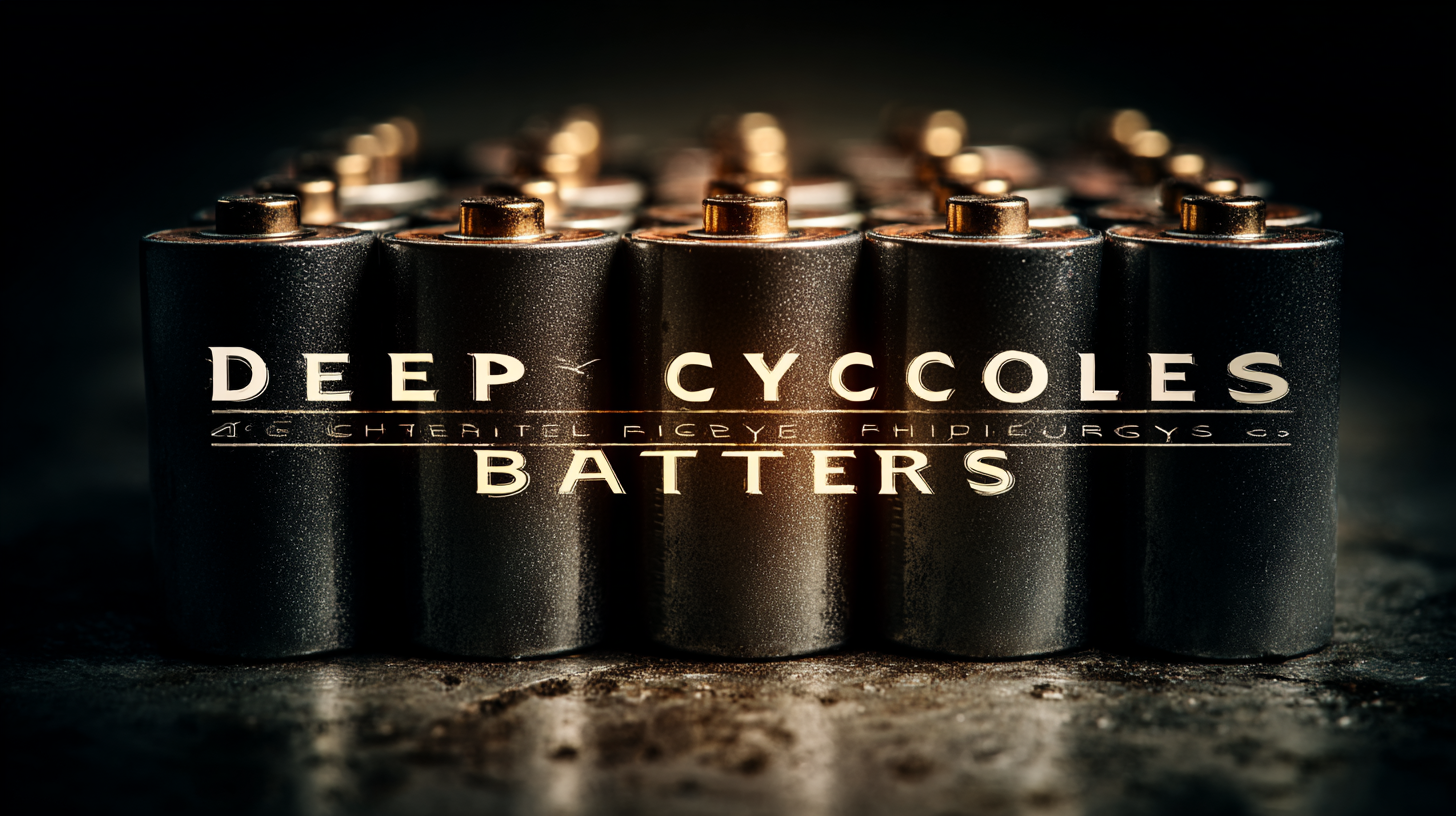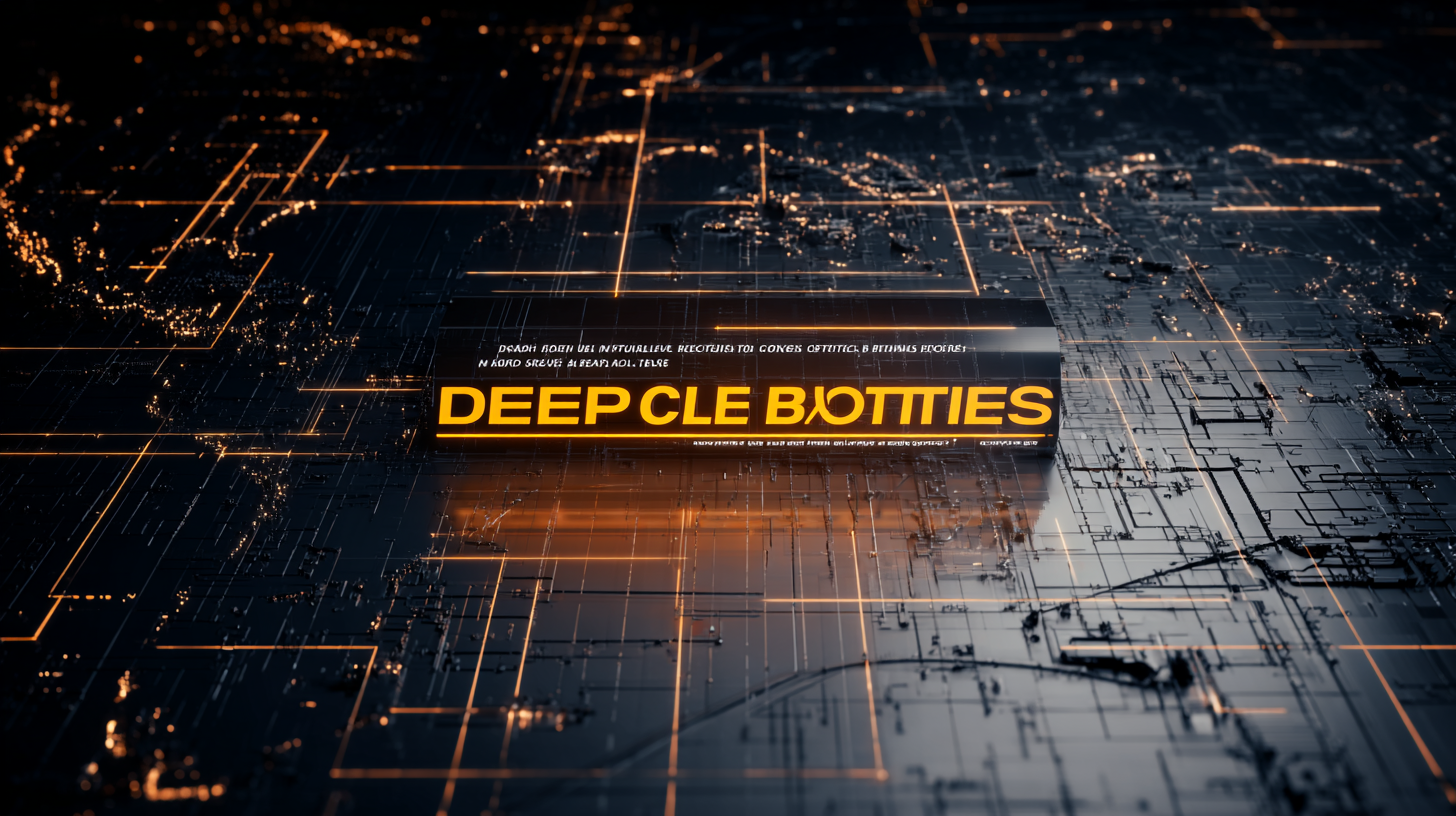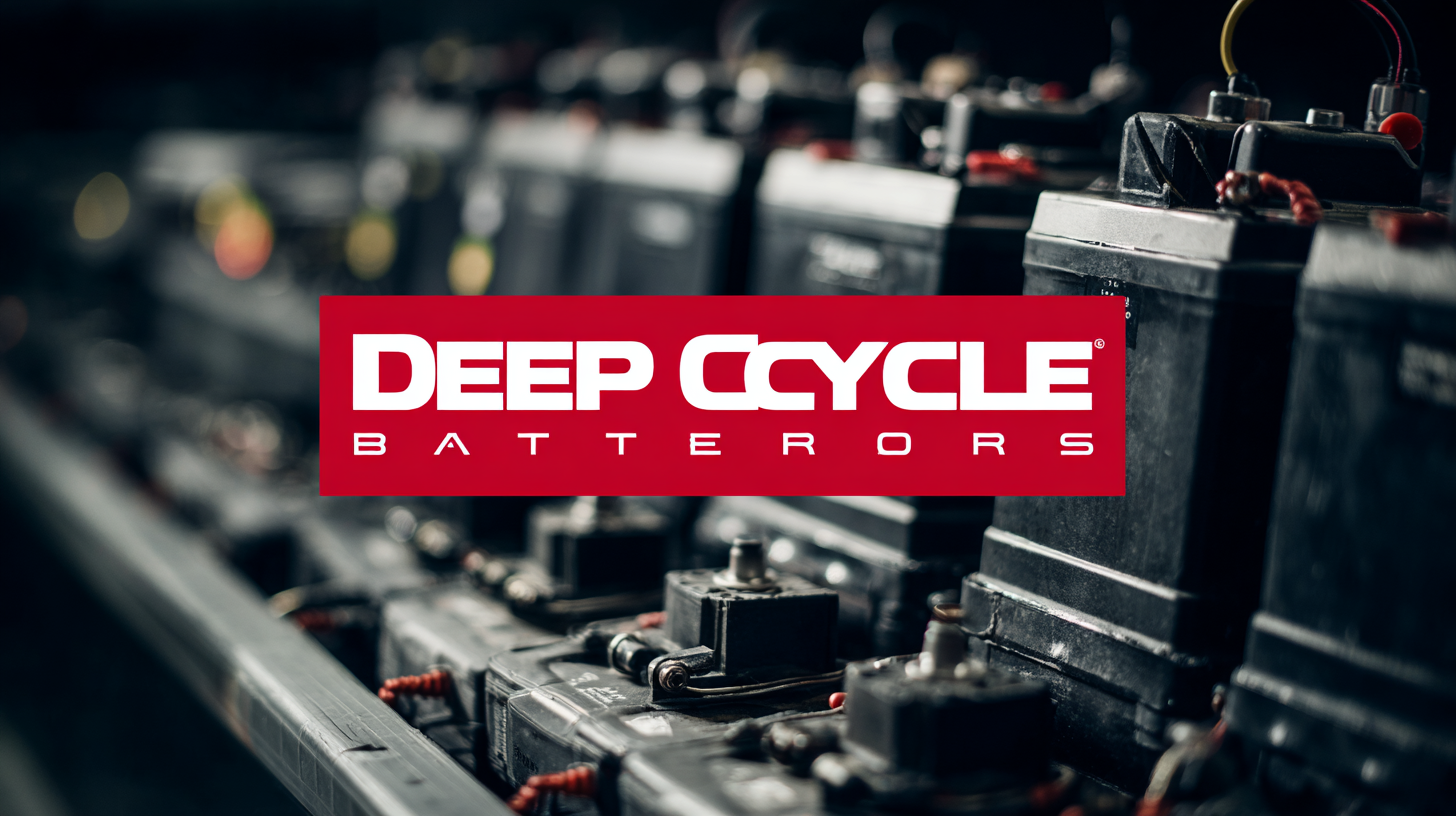Solutions for Finding the Best Deep Cycle Batteries for Reliable Energy Storage Globally
In an era where reliable energy storage solutions are paramount for both residential and commercial applications, Deep Cycle Batteries have emerged as a crucial component in the transition towards sustainable energy systems. According to a recent report by Research and Markets, the global deep cycle battery market is projected to grow at a CAGR of 6.5% between 2022 and 2027, driven by the increasing adoption of renewable energy sources and electric vehicles. As users become more reliant on these batteries for prolonged power supply, selecting the right manufacturer becomes imperative to ensure performance and longevity. This blog aims to guide consumers through the intricate process of finding high-quality deep cycle batteries, emphasizing essential factors such as manufacturer credibility, battery types, and technological advancements, to facilitate informed choices in this expanding market.

Understanding Deep Cycle Batteries: Key Types and Their Applications
Deep cycle batteries play a crucial role in energy storage systems, particularly for renewable energy applications. Typically, these batteries are designed to be discharged and recharged repeatedly, making them ideal for uses such as solar energy storage and electric vehicles. The two main types of deep cycle batteries are lead-acid and lithium-ion. According to a report by the International Energy Agency (IEA), the global lithium-ion battery market is forecasted to exceed $100 billion by 2025, driven by increasing demand for electric vehicles and sustainable energy solutions. Lead-acid batteries, while more affordable, generally have a shorter lifespan and lower energy density compared to their lithium-ion counterparts.
When selecting a deep cycle battery, consider factors such as discharge rate, capacity, and application-specific requirements. For instance, if you're using the battery for off-grid solar power, ensure that it has a high cycle life to handle frequent charging and discharging. Tip: Regularly check the battery's state of charge; keeping it within optimal charge levels can significantly extend its lifespan.
Additionally, the environmental impact of the battery should not be overlooked. Lithium-ion batteries, while more efficient, also require careful disposal and recycling procedures to prevent environmental harm. Tip: Choose batteries from manufacturers committed to sustainable practices and easy recycling options. This choice helps reduce your carbon footprint and supports an eco-friendly energy storage solution.
The Importance of Battery Capacity and Cycle Life in Energy Storage Solutions
When it comes to finding the best deep cycle batteries for reliable energy storage, understanding battery capacity and cycle life is crucial. Battery capacity, measured in amp-hours (Ah), indicates the amount of energy a battery can store, directly impacting how long it can power your devices before needing a recharge. Choosing a battery with the right capacity ensures that your energy storage solution can adequately meet your power demands, whether for off-grid living, renewable energy systems, or backup power applications.
Equally important is the cycle life of a battery, which refers to the number of charge and discharge cycles it can undergo before its performance begins to degrade. A longer cycle life means that the battery will provide reliable energy storage over a more extended period, reducing the need for frequent replacements and the associated costs. By selecting batteries with high cycle life ratings, users can maximize their investment and ensure consistent energy availability for their applications, contributing to more effective and economical energy management.
Examining the Chemistry Behind Deep Cycle Batteries: Lead-Acid vs. Lithium-Ion
When choosing the best deep cycle batteries for reliable energy storage, understanding the chemistry behind these batteries is crucial.
Lead-acid batteries, which have been a mainstay in the energy storage market, come in various types such as flooded, sealed, and deep cycle batteries.
Flooded lead-acid batteries are cost-effective and widely used for stationary applications, while sealed lead-acid options are prized for their maintenance-free operation and ability to perform in tight spaces.
Deep cycle lead-acid batteries, specifically designed for frequent discharge and recharge cycles, are vital for renewable energy systems and electric mobility.
On the other hand, lithium-ion batteries are gaining significant traction due to their superior energy density and longer lifespan compared to their lead-acid counterparts.
The shift towards lithium technology is primarily driven by the increasing demand for efficient energy storage solutions in electric vehicles and portable electronics.
As markets for batteries expand, particularly in the renewable energy sector, the ability to recycle and repurpose these batteries will play a critical role in sustainability efforts.
The competition between the traditional lead-acid batteries and newer lithium-ion technologies highlights the ongoing innovations and analysis within the energy storage landscape globally.

Global Market Trends: Demand for Deep Cycle Batteries in Renewable Energy Systems
The demand for deep cycle batteries is surging globally, particularly within renewable energy systems. With an estimated market size likely to reach around USD 39.84 billion by 2025, the importance of deep cycle batteries cannot be overstated. These batteries are crucial for energy storage, allowing for the effective capture and use of energy generated from renewable sources such as solar and wind. As the world shifts towards more sustainable energy solutions, the reliance on deep cycle batteries is expected to grow significantly to support various applications, from residential setups to commercial energy storage solutions.
In this context, other segments such as the marine battery market are also thriving, with projections indicating a robust growth rate propelled by the increasing adoption of hybrid and electric vessels. Moreover, advancements in energy storage technologies, spurred by innovations like AI-driven management systems, are further enhancing the efficiency and reliability of energy storage solutions. The intertwining of these developments signifies a transformative phase in the energy landscape, where deep cycle batteries will play an essential role in facilitating the transition towards a greener, more sustainable future.
Solutions for Finding the Best Deep Cycle Batteries for Reliable Energy Storage Globally
| Battery Type | Voltage (V) | Capacity (Ah) | Cycle Life | Weight (kg) | Applications |
|---|---|---|---|---|---|
| Lead-Acid | 12 | 100 | 500 | 30 | Solar Systems, RVs |
| Lithium-Ion | 12 | 200 | 3000 | 25 | Electric Vehicles, Off-grid |
| AGM | 12 | 100 | 800 | 27 | UPS Systems, Solar |
| Gel | 12 | 150 | 1200 | 35 | Marine, Wind Energy |
Factors Influencing Deep Cycle Battery Selection for Sustainable Energy Storage Solutions
When selecting deep cycle batteries for sustainable energy storage solutions, several critical factors must be considered to ensure reliability and longevity.
First, the battery type plays a significant role in performance and application. Common types include lead-acid, lithium-ion, and gel batteries, each offering unique advantages.
Lithium-ion batteries, for instance, provide higher energy density and longer cycles, making them suitable for applications requiring frequent charging and discharging.
Conversely, lead-acid batteries may be more cost-effective for less demanding uses.
Another factor influencing battery selection is capacity and discharge rate, which determine how long and how effectively a battery can deliver power.
Understanding the energy needs of your application is essential: larger energy requirements necessitate higher capacity batteries.
Additionally, environmental conditions, such as temperature and humidity, can impact battery performance and lifespan, highlighting the importance of specifications such as operating temperature range and resistance to corrosion.
Ultimately, choosing the right deep cycle battery involves evaluating these factors carefully to align with the specific energy storage needs of diverse applications around the globe.

